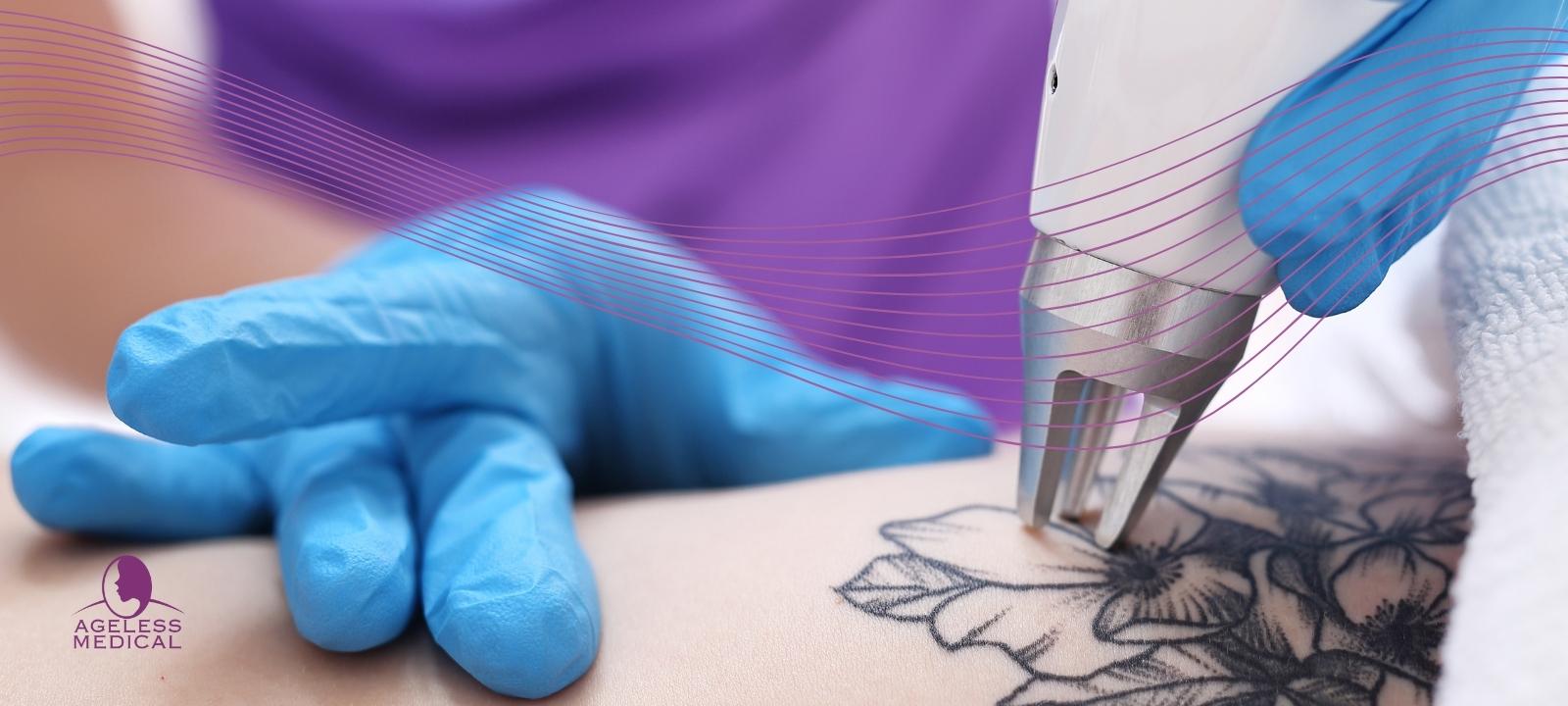It almost seems like there's a new laser treatment debuting every day—so we don't blame you if things get confusing. First, if you're not familiar with laser treatments, the concept is relatively simple: lasers are high-energy light beams that can be used to destroy pigment deposits under the skin's surface. They're utilized for things like tattoo removals, treating melasma, and battling other skin-pigmentation issues.
But the latest laser treatment we're interested in is a step up from the rest—a game-changer in the skincare-tech sector. It's called the PiQo4 laser—but what makes it so unique? We enlisted New York-based dermatologist Hadley King, MD, and Beverly Hills-based board-certified dermatologist Tess Mauricio, MD, FAAD, to explain. Ahead, we break down everything you need to know about a PiQo4 laser treatment.
What is a PiQo4 Laser Treatment?
"It's a laser that's used to remove tattoos and pigmentation on all skin types," says King, "The number four in the name is to highlight the fact that it offers four different wavelengths—1064 nanometers, 532 nanometers, 650 nanometers, and 585 nanometers."
This essentially means the PiQo4 laser is the most powerful, high-energy laser out there right now—which is exactly why it's become such a buzzy treatment.
"It offers nanosecond and picosecond pulse lengths," says King. "Nanosecond pulses are used first to break down larger and deeper pigment or ink particles, and picosecond pulses are used next to break down the smaller and shallower particles."
In other words: It's the best of both worlds and can treat all types of pigmentation issues that previous lasers didn't have the power to. "The combination yields better results compared to using either one by itself."
What are the benefits of a PiQo4 Laser Treatment?
First of all, you'll see results at the speed of light—no pun intended.
"The high energy levels allow pigment and tattoo removal with fewer treatments compared with other laser systems," says King. "And it has a larger spot size, which makes it particularly helpful for larger pigmentation issues."
And if you're looking to remove a tattoo, it's definitely one of the better options on the market. "It's used to target the most frequently used tattoo colors, ranging from light orange to dark black," King says. Again, it can be used to treat other issues around melasma and skin pigmentation and can also be used to rejuvenate skin generally.
But one of the most important things to know about the PiQo4 laser is that it's safe for all skin tones.
"A huge advantage of this laser is its ability to more safely treat unwanted pigmentation on the skin of people of color," says Mauricio, "In the past, it was challenging to treat patients of color as there's less contrast between the unwanted pigment and the natural, intrinsic pigmentation of the skin. Older lasers weren't yet able to differentiate between the two, which resulted in complications like burns and scarring."
Ahead, esthetician Ashley Taylor, who gently talked me through the step-by-step process during my appointments, and dermatologist Rachel Maiman, MD, explain how laser hair removal works and what to expect from the treatment.
How to Prepare for a PiQo4 Laser Treatment
First, you need to find a professional for the task, so ask your dermatologist about the treatment. This isn't something you should try outside of a dermatologist's office.
In general, you should prepare no differently than you would for any other type of laser treatment. That is: avoid the sun as much as possible, wear sunscreen, and don't get spray tans. Try not to shave, wax, or exfoliate the area before the treatment, and avoid taking certain anti-inflammatory drugs (like Aspirin) that can exacerbate or cause excess bleeding.
Also—and this should go without saying here at Byrdie—it's imperative to drink lots of water to promote a healthy healing process. (Which, by default, should probably involve avoiding alcohol the night before.) Another pro tip: It's a good idea to wear loose-fitting clothing to the appointment so the doctor can access the affected area, too.
Potential Side Effects
Like with any other laser treatment, there's always a slight chance of burns, scarring, discoloration, or blistering. It's improbable you'll experience any adverse side effects when you see a certified professional—but it's important to understand the risks beforehand.
"Even though the PiQo4 laser is generally safe for all skin tones, patients with very dark skin, like Fitzpatrick skin type 6, should still be very careful and understand the risks and benefits before starting treatment," says Mauricio. This is because darker skin tones are more susceptible to hypopigmentation, which happens when the treated area becomes darker than the original skin tone due to the loss of melanin and white spots.
Overall, as long as you consult a dermatologist—and follow good aftercare if you decide to get the treatment done—the risks are definitely low.
The Cost
PiQo4 lasers are typically expensive for practices to obtain and maintain (it's a sophisticated, high-tech, medical-grade laser, after all), so treatments can get pricey. Prices will vary, but they generally run from $250 to $500, depending on the treatment area.
Aftercare
Following any laser treatment, you can expect some minor redness, swelling, and sensitivity. During the healing process, avoid direct sunlight, heat, and high water pressure—so no steaming-hot showers. In fact, you'll want to avoid any bodies of water in general—including baths, hot tubs, and swimming pools—as these all increase the chance for infection. If you need to wash the area, pat it with a washcloth and a gentle soap.
Once again: Drinking water helps restore cells, which, in turn, helps the healing process—so try to stay hydrated and keep your alcohol intake down.
Also, things like blistering and scabbing are part of the natural healing process, and it's important not to pick or touch the area following the treatment. (Trust me—as a skin picker, I know how difficult this can be.) It's imperative to let the area heal and keep it as dry and clean as possible. You should only remove the bandage after three days, and you can also use Vaseline or hydrocortisone cream to hydrate and soothe the skin as it heals.
Read full article here. | Laser Tattoo Removal in South Florida

